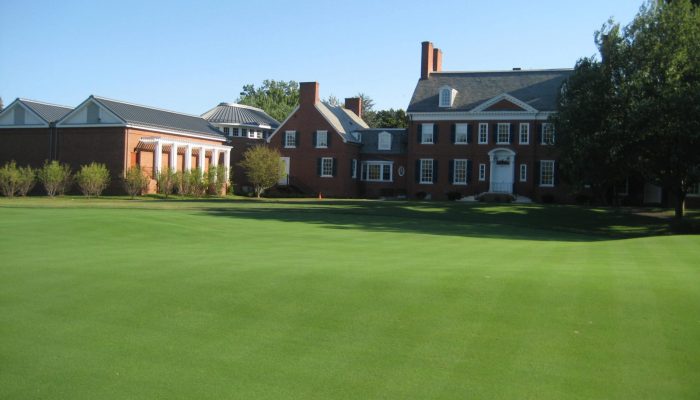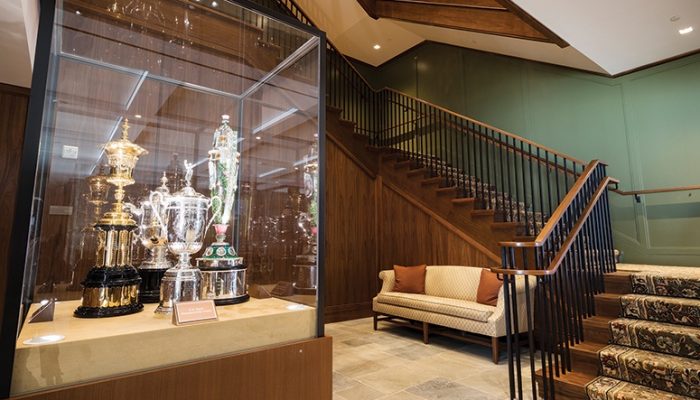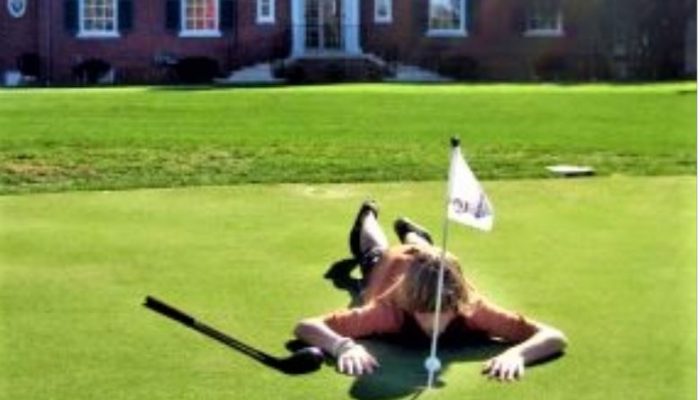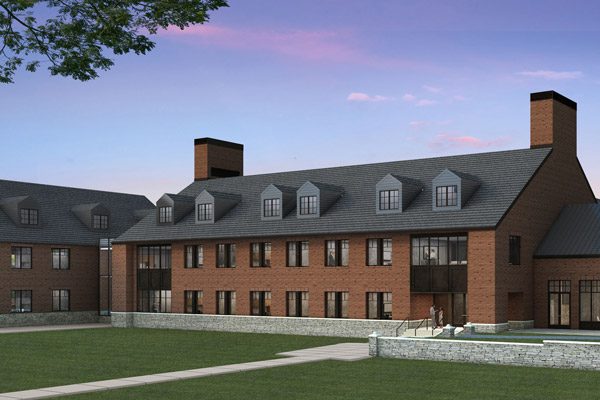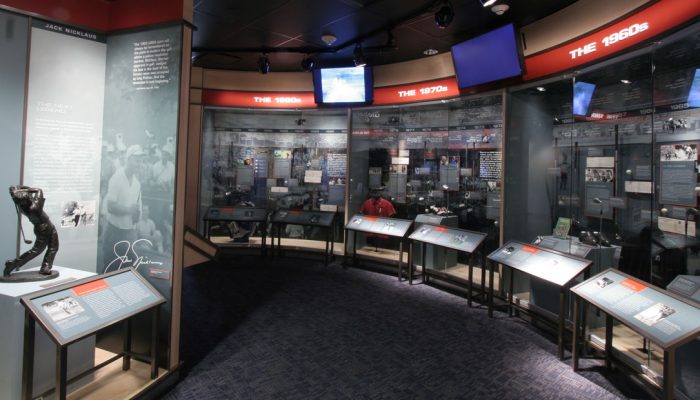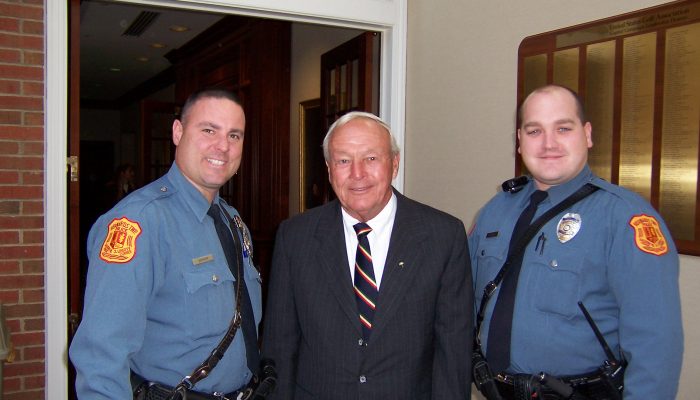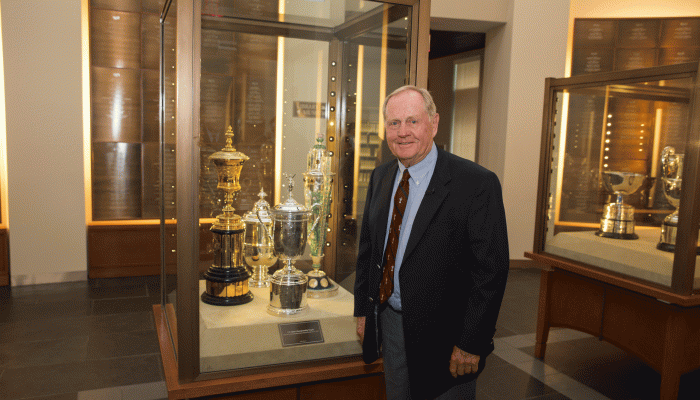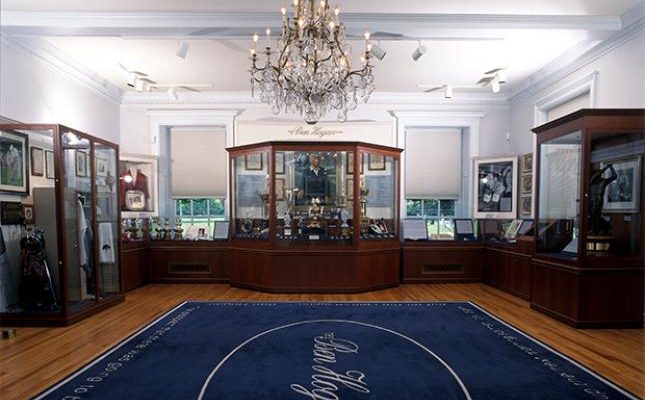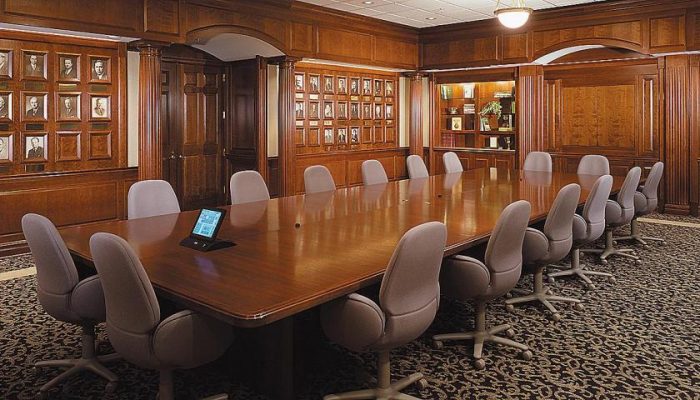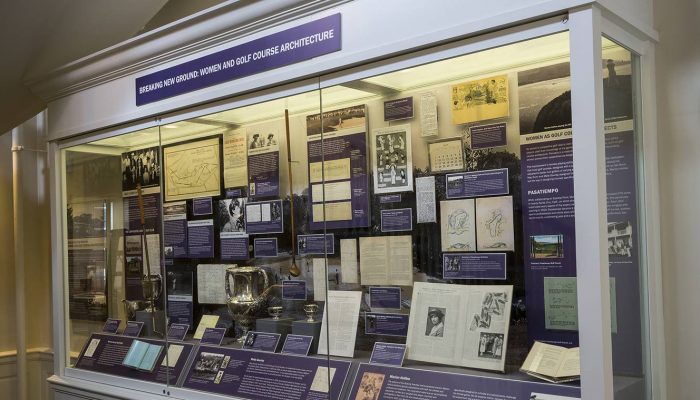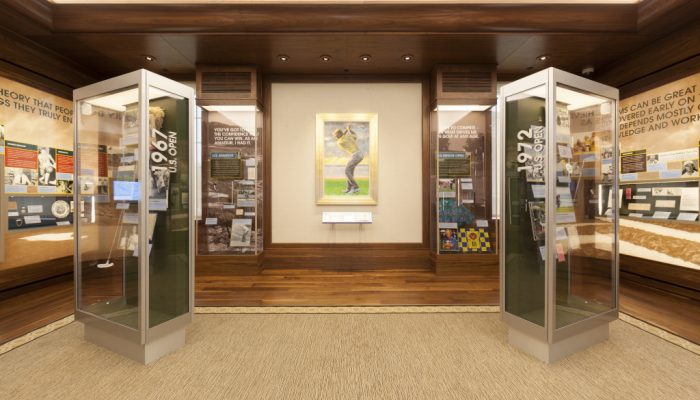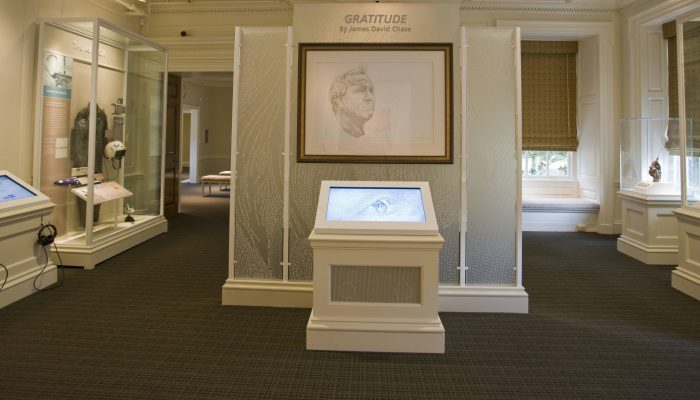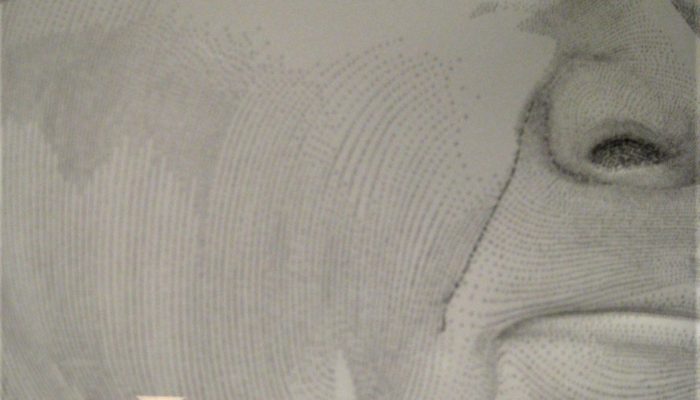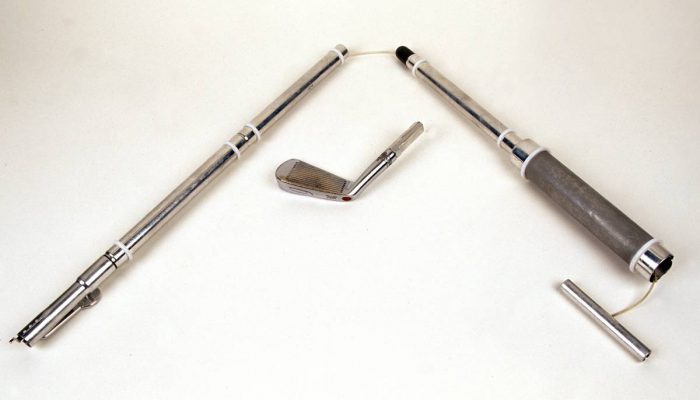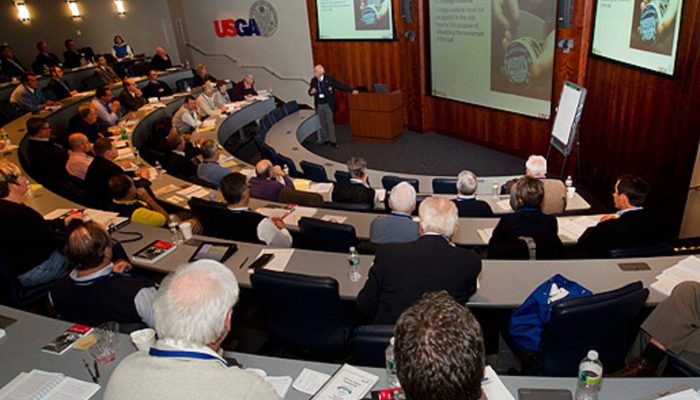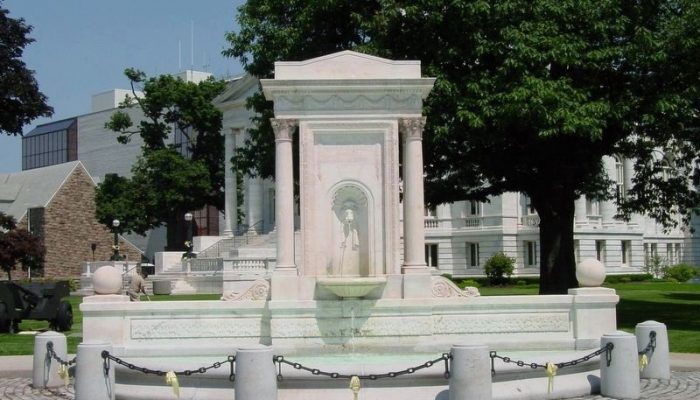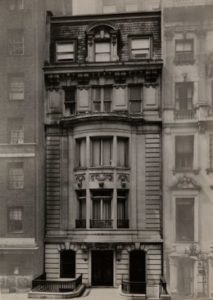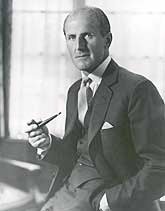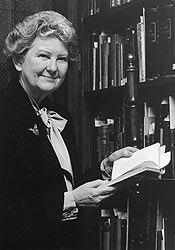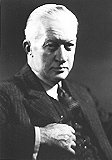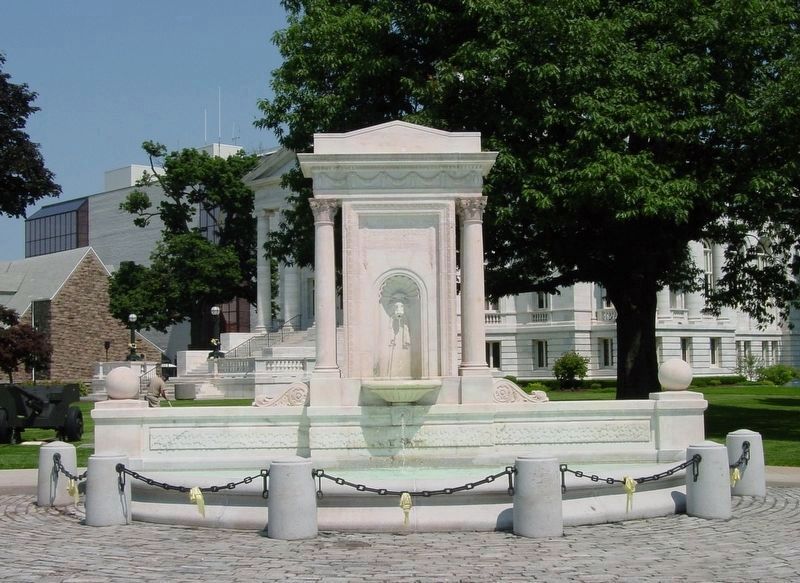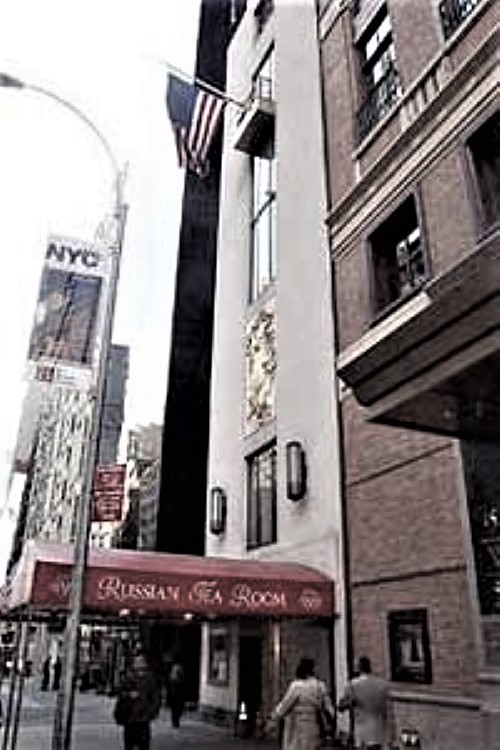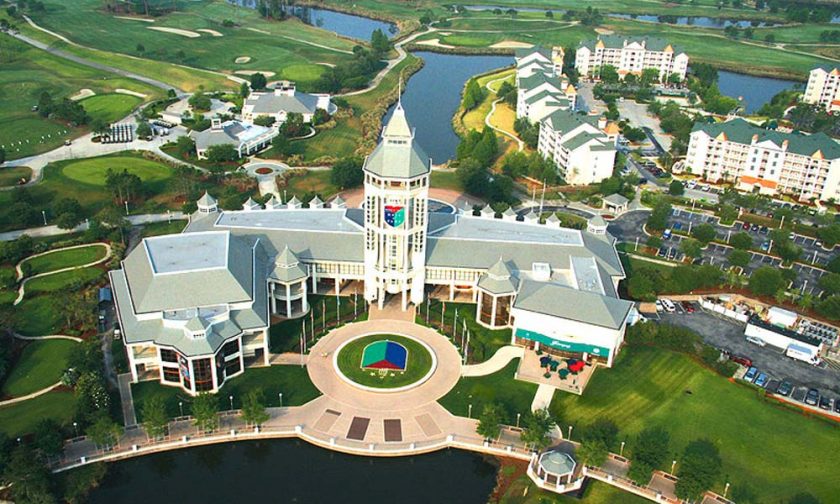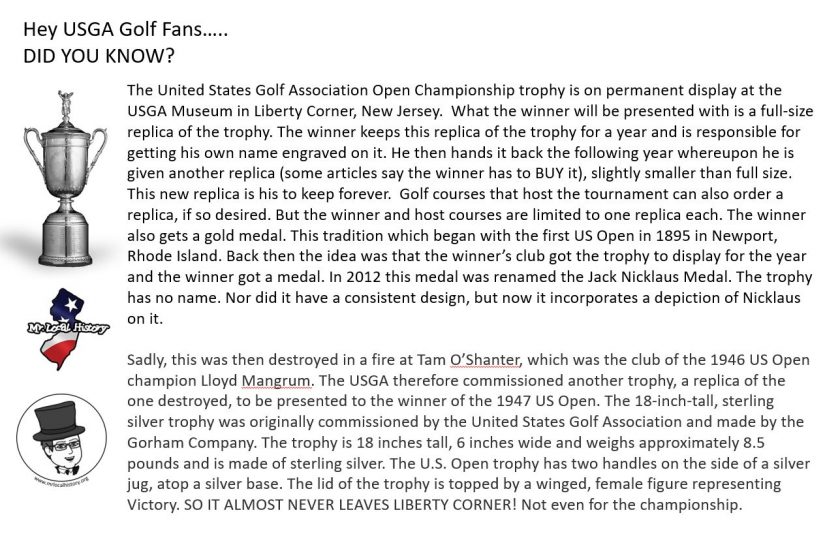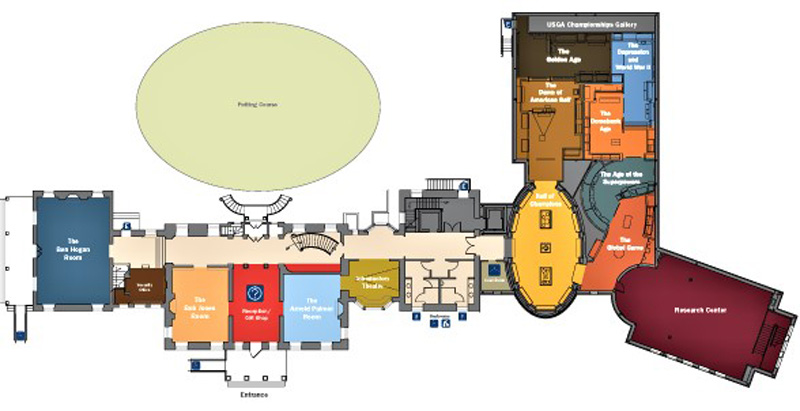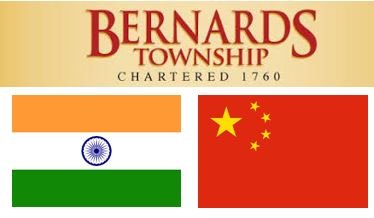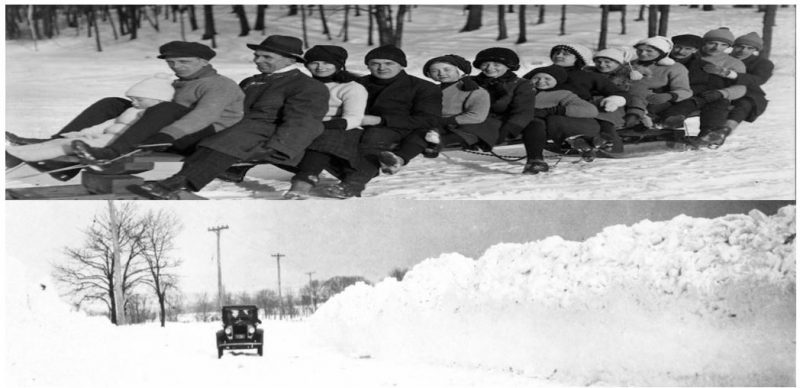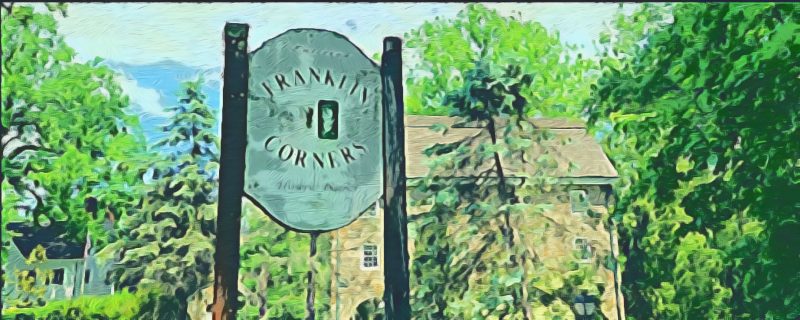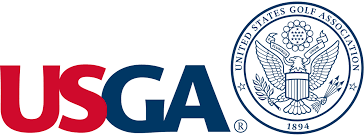
UPDATE:
OK, now the story is getting better! Janeen Driscoll, USGA director of brand communications, said that the administrative building and the golf museum here, known as Golf House, will remain intact. Driscoll said that the USGA’s CEO and the majority of its executive team are expected to remain in New Jersey. The main change will be the closing of the site’s 36-year-old equipment testing center, where golf balls and clubs are tested for conformance to the rules of golf. About 50 full-time USGA employees, or 15 percent of the staff, will be housed in Pinehurst. The USGA eventually chose to expand its museum in 2009, and it expanded and renovated its administrative building in 2017. In 2018, it reinforced its commitment to the township by acquiring the adjoining, 118-acre Pyne tract.
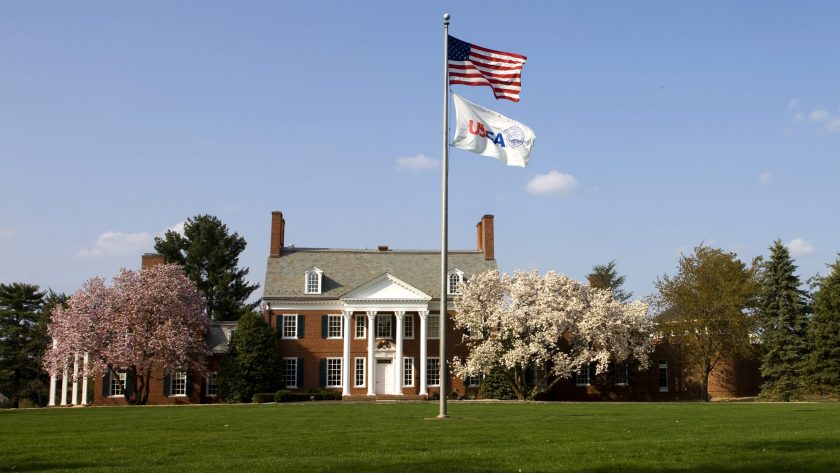
The USGA Museum, currently located adjacent to the USGA Headquarters, has long been a mecca for those passionate about the game. Some 20,000 avid golfers make the pilgrimage to Somerset Hills each year to visit the museum. This elegant brick three-story Georgian colonial mansion, designed in 1919 by John Russell Pope, has been home to the USGA Headquarters & Museum since 1972.
In 1919, Thomas H. Frothingham (1891-1971), a stockbroker and partner at Potter Brothers & Company, commissioned architect John Russell Pope to design the Georgian colonial mansion. And wait until you hear what happened to the other owners before the USGA got it.
“Our biggest hurdle is people understanding that we exist and letting them know where we are,” said museum director Rand Jerris. “People say ‘Cooperstown’ and everybody knows it’s the baseball Hall of Fame. We are in many ways the Cooperstown of golf. We want people to know where Far Hills is and what the USGA is about. I read in a newspaper article a writer wrote that we are trying to be the Cooperstown of golf. Given that we were first, we prefer to think Cooperstown is trying to be the Far Hills of baseball.”
The funny thing though, the USGA is in the Liberty Corner section of Bernards Township, not Far Hills!
USGA Museum
Founded in January 1936, about a year before the National Baseball Hall of Fame, in Cooperstown, NY, the USGA Museum was the first museum in the country dedicated solely to sports. George Blossom, a USGA committee member, approached the group with the idea of creating a museum in 1935. It opened the next year in New York City.
In the 72 years since the creation of the museum in 1936, the collections have grown to comprise more than 50,000 artifacts, a library of more than 30,000 volumes, more than half a million photographic images, and several thousand hours of historic film, video, and audio recordings. Together, the museum’s collections present a comprehensive history of the game’s development in the United States over the course of nearly 250 years. They are also the finest collection of golf memorabilia in the world.
The USGA Early Years
The collection was displayed in the association’s lobby, corridors, and offices for the first 20 years after the 1936 decision to create a dedicated USGA golfing museum. In 1950, the USGA moved into what became the first Golf House, a five-story brownstone on 38th Street in the Murray Hill section of Manhattan where it dedicated two floors for the museum. The New Yorker Magazine called the USGA Museum “the Louvre of the golfing world.” Click Here to see the USGA 1950 Golf Journal Magazine entry.
Finding a new home for the USGA’s headquarters and museum was one of the great legacies of Ken Gordon’s tenure on the Executive Committee.
Ken Gordon spent nearly 20 years of his life serving the boards of the Metropolitan Golf Association and the USGA. From 1968-75, he served on the USGA’s Executive Committee, including two years as secretary (1974-75). During that time, he chaired the Museum Committee and helped lay the groundwork for the Association’s move from New York City to Far Hills.
Gordon was a member of Montclair Golf Club in New Jersey, where one of his fellow members was the famous golf course architect, Robert Trent Jones Sr. In the early 1970s, the USGA’s Executive Committee had discussed moving from Manhattan and Jones had heard about some property in Far Hills that was coming up on the market.
The USGA, through the work of Gordon and others on the Executive Committee, purchased the property from David Potter. The Museum at Golf House opened its doors in the summer of 1972. “He’s really the man who was responsible for bringing Golf House to New Jersey,” said Janet Seagle, the late USGA Museum Curator, in her oral history. “He was also the man to get some funds for the Museum finally.”
The Decision
At the USGA Executive Committee meeting on January 22-23, 1970, Mr. Philip Strubing 2nd, a trial lawyer and President of the USGA in 1970-71, noted that the NYC Golf House was no longer large enough to accommodate the USGA and the association, the museum and library.
Subsequently, at the June 13, 1970, Headquarters Committee meeting, USGA President Strubing mentions a possible building at 27 East 39th Street, then owned by the Christian Herald magazine for $1,050,000. The committee was also considering acreage in Stamford and Greenwich, CT being advised that acreage would cost between $50,000 and $75,000 per acre. Three acres on Old Post Road were under consideration for $275,000. The decision was made to keep looking.
Rappahannock Estates near Warrenton, Virginia was also considered as the search continued. The 2,500-acre property was later rejected due to soil tests noting constraints to create a top-rate golf course on the property.
Executive member Mr. Strubing and Robert Trent Jones noted the availability of a mansion only one hour and 15 minutes from NYC which he recommended as a potential USGA headquarters. Containing 65 acres, and an asking price of $500,000 presently in bankruptcy from a Mr. David Potter, the Headquarters Committee visited the property and considered the structure “eminently suitable” for USGA Headquarters.
USGA Executive committee meeting – January 28, 1971
The Executive Committee also noted an additional 150 acres owned by Mrs. Percy R. Pyne II (her husband was a former committee member and her son Percy Pyne III was a committee member at the time). Jones had hoped the acreage be purchased for $4,000 per acre and the construction of a golf course could cost $700,000.
Mr Strubing said, “if a course were built, Mr. Jones would expect to be the architect.” Three possible courses of action followed: purchase the Potter and Pyne properties and immediately begin construction of a golf course; purchase both and defer course construction, or purchase only the Potter property. The outcome was to seek an option to acquire only the Potter property for a $10,000 option. If agreed, the USGA would then negotiate for the 150-acre Pyne property.
The Headquarters Committee authorized “to acquire an option to buy an estate near Pluckemin and Liberty Corner”, New Jersey paying $4,500 for an option to buy the estate for $450,000, so long as use variance and zoning laws were approved. An additional $100,000 was estimated for building renovations. The USGA quickly received a “use variance” in June 1972 to move its non-profit business operations here with the stipulation that is be for the USGA only. The land was zoned three-acre residential.
Executive Committee meeting on June 12, 1971
The motion was noted and unanimously decided to acquire the property. The decision was announced publicly at the Merion Golf Club near Philadelphia(host to more USGA-hosted US Opens than any other location and host in 1971) on Wednesday, June 16, 1971.
Subsequent purchases were made, adding to the 62-acre Potter estate purchase: a 14-acre purchase of what’s been noted as the neighboring Vance property; a 13-room converted (was the original house’s stable) carriage house with stables in 2000; and a 10-acre adjoining Lee property parcel, for a total of 86 acres.
On March 8, 1972, the USGA began the drive to the suburbs, 30 miles west of Manhattan to the new 86-acre campus. The move was in full swing.
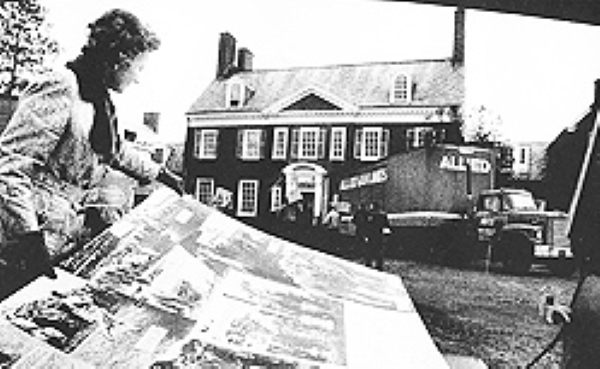
Bernards Township USGA Golf Course Proposals
One of the key reasons for the USGA’s move to the Somerset Hills was extensive outdoor space. The concept of creating a golf course at or near the USGA was in full swing in 1972. Their annual report of the Executive Committee stated “the possible construction and operation of a USGA golf course. Land has been selected and financing on reasonable terms has been arranged.
Johns-Manville Corporation, a company founded in 1858, and a big player in the development of The Hills residential project in Bedminster/Bernards Twp, offered to construct a golf course for the USGA. Estimates for such a facility were about $1,500,000. Johns Manville would then rent the course to the USGA for $156,000 per year plus taxes, with an option to buy the property at any time over the next 20 years for the original construction price, plus an additional 3% per year for appreciation consideration.
The course would be built on 140 acres that Johns-Manville had the option to purchase (the option expired on July 15, 1971) plus 75 acres of land they already owned. The 3% appreciation feature didn’t sit well with the committee, so they opted to table the discussion, and a course never materialized.
USGA Public Relations Director Robert T. Sommers also commented in the March 16, 1972 edition of the Bernardsville News that a possible 9-hole course was discussed on the current property.
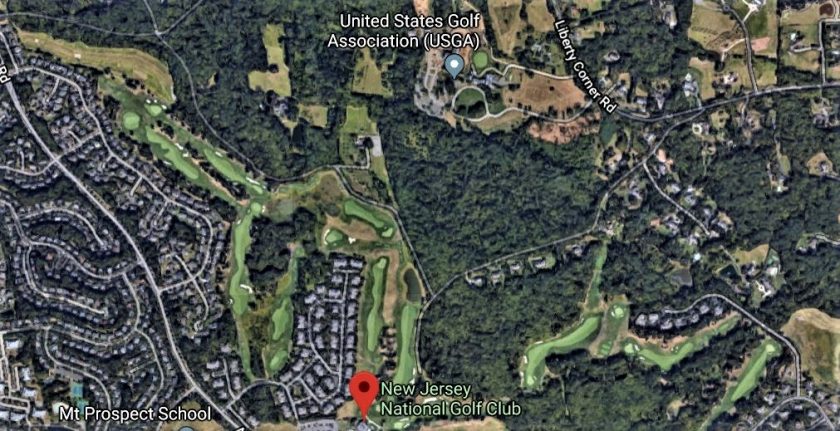
Peter Messina, former Township Engineer for Bernards Twp. noted in a brief discussion in 2008, that the USGA, while they never built the 18-hole course, they also had ideas of creating a 4-hole attraction at the USGA. “It was going to be designed by Robert Trent Jones, and it would have been two holes down, and two holes back to the USGA house. We had a number of private meetings and discussions, but nothing ever materialized.”
The only course that did materialize in the end was the development of the New Jersey National Golf Course, which is near the USGA facilities but has no affiliation with the USGA property.
The Estate & Grounds
Located in a Somerset County region noted as the Somerset Hills, Far Hills was actually part of Bernards Township until seceding in 1921. Rising taxes led the 200 residents of Far Hills to decide to separate from Bernards Township and to incorporate as a Borough. The local property tax rate jumped from $2.72 in 1919 to $3.53 in 1920.
The USGA Headquarters and Museum are not in Far Hills at all. They are physically located in Bernards Twp, a township comprising Basking Ridge, Liberty Corner, Lyons, and West Millington. Far Hills is only the mailing address. Therefore, if a proper location were used, the physical address would be in the Liberty Corner section of Bernards Twp.
In 1919, Thomas H. Frothingham (1891-1925) after marrying his wife Elizabeth Sherman Hoyt ((great-granddaughter of Civil War fame General William Sherman) on January 20, 1915, commissioned world-famous architect John Russell Pope to design the Georgian colonial mansion, and Ferrucio Vitale, a landscape architect, to design the grounds.on 300 acres in Bernards Township. The estate was named “Dogwood.” Frothingham, originally from Philadelphia, was a partner and stockbroker at Potter Brothers & Company on 5 Nassau Street in New York City.
The design is sometimes referred to as a “Maryland 5 part Plan”: three large sections with two adjoining areas connecting structures of the center area. The structure and grounds included a living room on the lower left, children’s bedrooms above left, gun room, dining room on the right, kitchen/service wing on the back right with staff bedrooms above, tennis courts, pool, bridle paths, orchards, & vegetable gardens.
Frothingham ran into tough times. Due to Frothingham’s bankruptcy as a partner of the brokerage company Potter Brothers & Company, a failed suicide attempt on September 11, 1921, occurred. “In Hoyt’s bedroom, on the second floor, they found him lying in a heap, blood oozing from the wound in the left shoulder.” Two years later Thomas Frothingham deserted Elizabeth and their three children and disappeared to Memphis, Tennessee. Elizabeth filed for divorce on April 11, 1927. Later moving to Mexico to avoid bankruptcy prosecution, Frothingham died bankrupt in Mexico and the property was sold.
The Dogwood estate was sold in 1926 to Mr. John Sloane and renamed Pastureland. John Sloane was the grandson of the founder of the famed W. & J Sloane (1843-1985), a famous furniture and flooring store in NYC that catered to the well-to-do. A carriage house on the property was also home to former Secretary of State Cyrus Vance,(1926- 2002) who recently lived on the estate before he died in 2002. Vance married John Sloane’s daughter Grace Elsie Sloane back in 1947.
In 1955, Pastureland was sold from the Sloane’s to David Potter III (1905-1984), founder and President of Potter Aeronautical Corporation in Union, New Jersey, and the estate was renamed Murmur. David Potter invented the turbine flowmeter, an instrument that measures the flow of liquids. Potter Aeronautical closed in 1968. His production manager Ken Hoffer, later opened his own turbine flowmeter company Hoffer Flow Controls. “He thought of himself as a Howard Hughes-type,” said Ken, whose boss would occasionally up and disappear. “He was part of the famous Explorer’s Club in New York, and there is a mountain named for him in Alaska.”
Lastly, in 1972, the USGA bought Murmur from David Potter III and renamed Murmur, Golf House.
Golf House Architect – John Russell Pope

The architect John Russell Pope was no slouch when it came to creating powerful architecture. In addition to designing the original Dogwood estate for Thomas Frothingham, Pope also designed the Jefferson Memorial, the West Wing of the National Gallery of Art, The Abraham Lincoln Birthplace memorial, the British Museum, Lord Memorial Fountain (Somerville, 1910), and Washington Headquarters Museum (1935) in Morristown, to name just a few.
Golf House Almost Lost to The Russian Tea Room
Beginning in the early 1970s and continuing through 2003, the USGA considered moving its museum to Rhode Island, Colorado, California, Atlanta, and even the old Russian Tea Room in New York City before deciding to expand its current site in the Somerset Hills of New Jersey.
For two decades, the USGA Museum Committee’s mantra seemed to be “find a home anywhere but in Far Hills.” It explored several urban locales, including Atlanta and Monterey, CA, arguing that such a move would boost attendance to 300,000, above the 10,000-25,000 visitors who annually toured the museum at its remote New Jersey setting.
So it came as no surprise that the USGA’s most serious flirtation eventually centered on moving its museum back to New York City. In 2002, the USGA purchased the Russian Tea Room restaurant and building for $16 million in bankruptcy court on Nov. 18, 2002. (See NY Times Article)
The Tea Room’s Manhattan location was tough to beat. (The restaurant’s longtime slogan: 6 minutes and 23 seconds from Lincoln Center and slightly to the left of Carnegie Hall.) USGA Museum Director Rand Jerris said the USGA’s projections for a Tea Room museum called for 100,000 visitors per year, though The New Yorker quoted him as saying “300,000 visitors (was) a reasonable expectation.”
Support for the move dwindled when the USGA learned the true cost of the project, adding a necessary seventh floor to the Tea Room pushed renovation costs alone to $50 million, according to Jerris. The committee deemed such expenses were excessive, and in 2004 the USGA sold the property for $20 million, recouping its initial investment and subsequent expenses.
Competition for Visitors
For the first 16 years of its existence, the USGA had no formal home to display its golfing memorabilia and artifacts collection. It forced USGA officials to re-evaluate their approach. The resulting discoveries altered the essence of their museum vision.
Jay Rains, chair of the museum committee since 2004, says officials were surprised to learn that only two museums in the world—the Smithsonian National Air and Space Museum in Washington and The Louvre in Paris—have a positive cash flow on operations (excluding development and charitable contributions).
That confirmed the difficulties of the museum business, in general, and underscored the limitations of golf exhibits. The original World Golf Hall of Fame in Pinehurst, N.C., flourished on rainy days when golfers had nothing better to do but closed after a drought of visitors in 1994.
An updated glossy version opened in 1998 as the centerpiece of the World Golf Village in St. Augustine, Fla., and promised – along with an adjoining IMax theater – 500,000 visitors in its first full year. But there haven’t been enough rainy days in the Sunshine State, either. Attendance hasn’t met expectations. More guests still come to watch an IMax movie than to see special exhibits heralding Hall-of-Famers.
During the search for a new home, a few voices suggested donating the USGA’s collection to the World Golf Hall of Fame, but those considerations were quickly hushed. Says Jerris: “The fact is, Mr. (Bobby) Jones gave us Calamity Jane II and Mr. Hogan willed his memorabilia to the USGA because they wanted us to have (those items) and display them, not to pack them up and send them somewhere else.”
Famous Visitors and Ties to the Somerset Hills
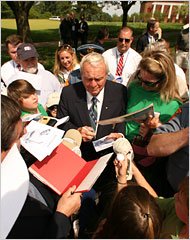
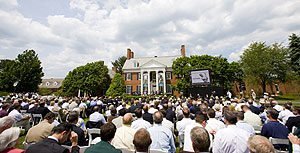
Famous visitors have included:
- Percy Pyne—The third Intercollegiate National Champion, back in 1899, with the Princeton golf team, is a long-time Bernardsville resident.
- Max Behr – Course Architect, Somerset Hills Country Club Champion and Far Hills resident.
- Alan Shepard – Astronaut of the Apollo 14 Mission and space golfer
- Brian Duffy – Endeavor astronaut and “Shuttle putter“.
- Arnold Palmer– Golf Legend
- Jack Nicklaus – Golf Legend
- Chief Justice Sandra Day O’Connor (First woman on the Supreme Court)
- Governor Tom Ridge – (1st US Director of Homeland Security)
New Attraction Honors Local Residents
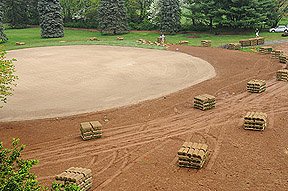
When the new Pyne’s Putting Course – named to honor Percy and Evelyn Pyne, who resided on the grounds of the country estate now occupied by Golf House – opened on Sept. 23, 2008, visitors had an opportunity to take golf history into their own hands by using replicas of classic putters, including Bob Jones’ Grand Slam-winning putter, Calamity Jane II, which has been called “the most famous golf club in the world.”
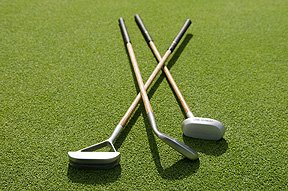
The new putting course provides visitors an opportunity to extend their visit beyond the exhibitions. Inspired by the Himalayas putting course at St. Andrews, visitors can putt with replica antique clubs, balls, and modern equipment. Like the Himalayas at St. Andrews, this 16,000-square-foot green includes sizable humps and swales designed to make the experience challenging and entertaining, as well as educational. See details
Paul Ramina, the director of grounds at nearby Hamilton Farm Golf Club, and Hamilton Farm’s superintendent Pat Husby also offered their services in training the USGA grounds staff on cutting-edge green maintenance practices.
Preserving History is #1
In the end, becoming a tourist attraction became a secondary concern. Preserving history was priority No. 1. That’s not to say traffic and revenue aren’t important. “We’re the USGA — the United States Golf Association. We want to tell the story of American golf, and do it in a way that would appeal to a broad spectrum of people.”
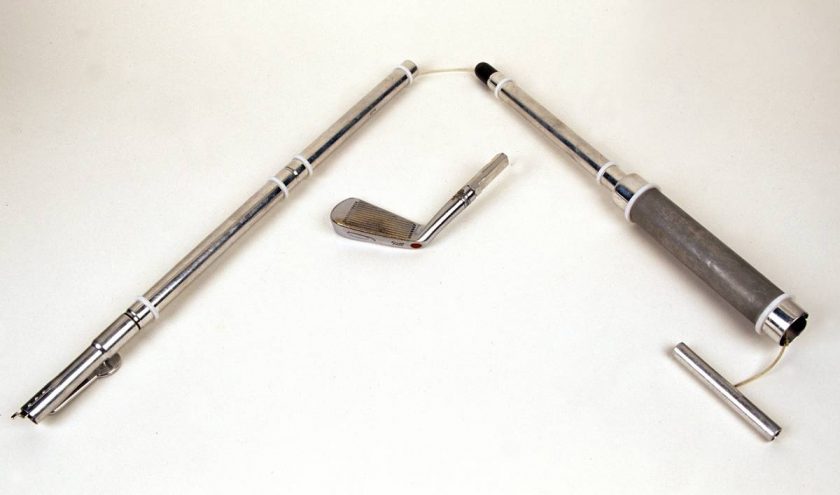
So, the USGA decided to kick the Scots to the curb and tell the story of American golf through the lives of those colorful characters who played in the USGA’s major championships — with U.S. history mixed in. Jerris immediately began a scavenger hunt for the 2,000 items to display.
Over three years, he pried open dusty trunks in storage, contacted the families of the stars of yesteryear and the superstars of today, begged golf collectors, bid at auctions, spent a couple of hours each day scouring eBay and still does. With an annual budget of $100,000, he is snatching up as much U.S. golf history as he can.
From there, visitors can head to the Test Center to hit a mashie (that’s a 5-iron) or the latest Big Bertha and argue whether Nicklaus, when compared to Woods, was hampered by the equipment of his day.
The USGA Museum, located adjacent to the USGA headquarters, has been renovated and expanded. The original Museum building, completed in 1919 and designed by noted American architect John Russell Pope, has been renovated and expanded. The renovated building features the Ben Hogan Room and Bob Jones Room, together with a new Arnold Palmer Room.
The Arnold Palmer Center & Renovation 2005-2008
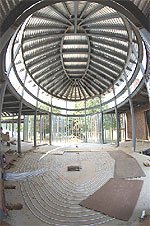
The museum staff spent much of 2005-2008 digging deeply into the vast and extensive archives at its disposal. As a result, the new exhibits feature hundreds of historic photographs and numerous multi-media, audiovisual presentations. Visitors now have an opportunity to learn about the game through entertaining interactive displays located throughout the exhibition galleries.
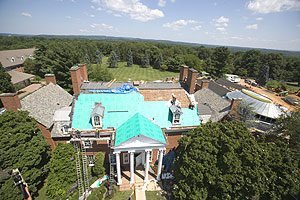
The 16,000-square-foot addition called the Arnold Palmer Center for Golf History, features 5,000 square feet of galleries, a research room and state-of-the-art storage areas for the museum’s 50,000 artifacts, 30,000 library volumes, more than a half-million photographs, and several thousand hours of film. “I have spent 20 years of my life around this institution, working with these treasures, thinking of the great stories and wondering if there would ever be the chance to transform this place and I think we have done it,” Jerris said.
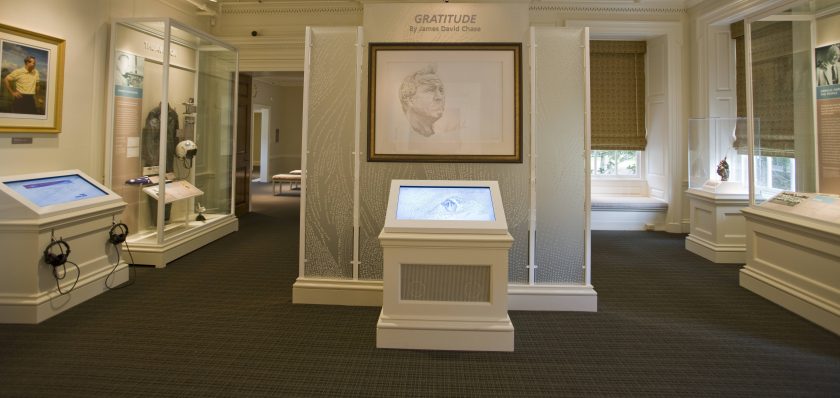
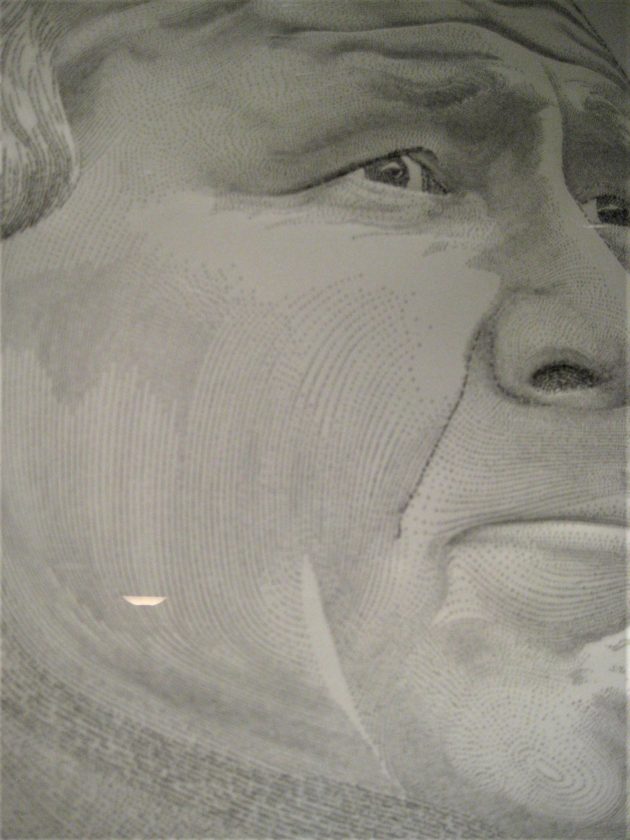
Special Thanks
A special thanks goes out to Rand Jerris, Ellie Kaiser, and Nancy Stulack from the USGA Museum for for granting access to the stories, artifacts and the museum.
Rand Jerris, PhD, Director
Rand Jerris has served as Director of the USGA Museum since 2002. A long-time New Jersey resident, Jerris holds a B.A and M.A. from Williams College, and a Ph.D. in Art and Archaeology from Princeton University. Jerris is responsible for overseeing all aspects of the daily operation of the Museum and Archives, as well as the long-term development of the facility and its collections.
Ellie Kaiser
Assistant Manager of Photographic Archives
Ellie Kaiser has served as the USGA Museum’s Photo Editing Coordinator since 2006. Originally from Indianapolis, Indiana, Kaiser relocated to New Jersey in 2005. Kaiser graduated from Indiana University with a B.A. in Journalism and a minor in Art History. She is responsible for all daily requests for images in the collection and editing onsite during the championship season.
Nancy Stulack
Librarian
A native of New Jersey, Nancy Stulack joined the USGA staff in 1985, working in the USGA Foundation Department before joining the Museum staff in 1990. She is responsible for the daily operation of the USGA Museum’s Research Center, as well as the administration of the Library Collection.
USGA Museum Floor Plan
The USGA’s floorplan has changed dramatically. The Floor Plan of the USGA Museum and Arnold Palmer Center for Golf History.
USGA Timeline
| 1894 | USGA established |
| 1919 | Thomas Frothingham lived in the 300 acre Dogwood estate 6 years, finally declaring bankruptcy and forced out of the estate since it was “built with “ill gotten gains”. |
| 1921 | Far Hills Borough succeeds from Bernards Twp thus changing only the mailing address of the Frothingham estate. The property is still actually part of Bernards Twp |
| 1921-1926 | January – USGA Museum established (a year before the Baseball Hall of Fame) First museum in the US dedicated to sport with over 5,000 artifacts. For the first 14 years of its existence, the museum had no formal home and artifacts were displayed throughout the USGA offices in New York City. |
| 1936 | At the Executive Committee meeting on June 12, 1971, the Headquarters Committee authorized “to acquire an option to buy an estate near Pluckemin and Liberty Corner”, New Jersey paying $4,500 for an option to buy the estate for $450,000 |
| 1926-1955 | John Sloane (1893-1971) moved from Peapack. Renamed Dogwood to Pastureland. Daughter Grace Ellie married Cyrus Vance (Secretary of State for President Carter) there. Elsie died in 1947. |
| 1938 | The first significant donation to the Museum—Bob Jones’ legendary putter, Calamity Jane II |
| 1950 | “Golf House,” located at 40 East 38th Street (Murray Hill section- Between Madison & Park) in New York City, becomes the Museum’s home (four blocks from Grand Central) dedicating two floors to golf artifacts. |
| 1955 | Pastureland is sold from the Sloane’s w/ 62 acres to David Potter III. Pastureland is renamed Murmur. |
| 1971, June 12 | The decision was announced publicly at the Merion Golf Club on Wednesday, June 16, 1971. The USGA bought David Potter III’s 62-acre estate in bankruptcy and renamed Murmur to Golf House for $450,000. |
| 1971, June 16 | USGA is considering moving the museum to Russian Tea Room in NYC. |
| 1972, March 8 | Move-in day. USGA and USGA Museum collections begin moving from New York City location |
| 1972 | Ribbon Cutting Ceremony |
| 1985 | USGA major renovation of Golf House expanding the museum to two floors and all new exhibits. |
| 2002- Nov 18 | The USGA purchase the Russian Team Room in NYC for $16 million |
| 2003, June 23 | After much debate, the USGA sold the Russian Tea Room for $20 million and decided to keep the USGA museum in Bernards Township. |
| 2004 | The museum completed an extensive internal review, which led to plans for the Palmer Center. Designed to become the premier institution in the world for the study and education of golf history, the Palmer Center is a critical step toward strengthening the museum, its programs, and its role within the USGA. |
| 2004 | When The Pyne’s Putting Course—named to honor Percy and Evelyn Pyne, who resided on the grounds of the country estate now occupied by Golf House—opens on Sept. 23, visitors will have an opportunity to take golf history into their own hands by using replicas of classic putters, including Bob Jones’ Grand Slam-winning putter, Calamity Jane II, which has been called “the most famous golf club in the world.” The new putting course provides visitors an opportunity to extend their visit beyond the exhibitions. Inspired by the Himalayas putting course at St. Andrews, visitors will be able to putt with replica antique clubs and balls, as well as modern equipment. Like the Himalayas at St. Andrews, this 16,000-square-foot green includes sizable humps and swales designed to make the experience challenging and entertaining, as well as educational. See details |
| 2005 | Golf House closes for a $19.7 million restoration and expansion. Farewell Mills Gatsch Architects, LLC, was founded in 1974 as Short and Ford, Architects. Based in Princeton, N.J., the firm, over its 34-year history, had become recognized nationally for both new design and historic preservation expertise. (Article update) |
| 2008, June 3 | USGA museum reopens with the new Arnold Palmer Center for Golf History |
| 2008 Sept |
When The Pyne’s Putting Course – named to honor Percy and Evelyn Pyne, who resided on the grounds of the country estate now occupied by Golf House – opens on Sept. 23, visitors have an opportunity to take golf history into their own hands by using replicas of classic putters, including Bob Jones’ Grand Slam-winning putter, Calamity Jane II, which has been called “the most famous golf club in the world.” The new putting course provides visitors an opportunity to extend their visit beyond the exhibitions. Inspired by the Himalayas putting course at St. Andrews, visitors will be able to putt with replica antique clubs and balls, as well as modern equipment. Like the Himalayas at St. Andrews, this 16,000-square-foot green includes sizable humps and swales designed to make the experience challenging and entertaining, as well as educational. See details |
| 2008, Oct 11 | The USGA museum participates for the first time in The Somerset County History Weekend |
Museum Location
77 Liberty Corner Rd,
Bernards Twp, NJ
Directions >
Museum Hours
Tuesday to Sunday 10 a.m. – 5 p.m.
Closed Monday and major holidays
Admission
Adults — $10
Seniors — $7
USGA Members — $5
Group Rate (10 people or more) — $8
Children (13-17 years) — $3.50
Children 12 and under — Free
Visitors will be able to purchase a USGA Membership on-site. The reduced admission fee for USGA Members and discount in the gift shop will apply immediately.
To become a USGA Member click here.
The USGA’s beautiful campus is located in the rolling countryside of the Liberty Corner section of Bernards Twp, NJ
Group Tours
For groups of 10 or more individuals, the USGA Museum offers a 60-minute guided tour, conducted by members of the Museum staff. The group rate is $5 per person. For additional information on scheduling a tour, please contact the Museum at 908-234-2300; or by email at museum@usga.org.
Additional Information and Links
- Carriage House Gets a Makeover (August 5, 2007)- Click Here
- United States Golf Association Museum Website – Click Here
- Pyne’s Putting Course opens at the USGA Museum – Click Here
- The World Golf Village – Click Here
- Golf Architect Robert Trent Jones – Click Here
- History of Johns Manville Corporation – Click Here
- Secretary of State Cyrus Vance
- The Russian Tea Room History – Click Here
- NY Times article and the Russian Tea Room – Click Here
